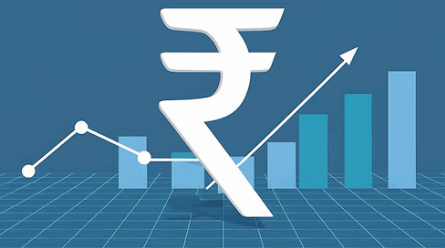| Overview: Tax-saving fixed deposits (FDs) offer investors stable and predictable returns while providing tax-saving opportunities under Section 80C of the Income Tax Act. With a 5-year lock-in period, assured returns, and easy accessibility, they serve as a practical option for individuals seeking low-risk investments, reliable safety, and income tax benefits within their financial planning. |
Why Tax-Saving Fixed Deposits Deserve a Place in Your Portfolio
In this financial landscape, investors often look for instruments that balance safety, tax efficiency, and assured returns. Among these, tax-saving fixed deposits have emerged as a popular choice. They combine the stability of a bank FD with the opportunity to save taxes, making them an attractive alternative to traditional savings products.
A tax saving FD enables individuals to not only earn interest but also reduce their taxable income under Section 80C of the Income Tax Act.
With fixed returns and a structured tenure, these deposits eliminate uncertainty often linked with market-based investments. For those seeking predictable growth alongside tax efficiency, they remain a trusted option in financial portfolios.
Understanding Tax Saving Fixed Deposits
Start your financial planning with a secure investment that offers both steady returns and valuable tax benefits under Section 80C.
What is a Tax Saving FD?
A tax saving fixed deposit is a financial instrument that allows individuals to invest a lump sum for a fixed tenure while also claiming tax deductions. Governed by Section 80C of the Income Tax Act, investors can claim deductions up to ₹1.5 lakh in a financial year. The deposit has a mandatory lock-in period of five years, which means funds cannot be withdrawn prematurely.
While the principal qualifies for deduction, the interest earned is fully taxable as per the applicable income tax slab, making it a blend of tax efficiency and safety.
With providers like Airtel Finance Fixed Deposit, investors can access competitive rates and a seamless online experience while securing tax benefits.
| Important to Know: Tax saving FDs cannot be broken before 5 years, so plan your liquidity carefully. |
Key Features of Tax Saving FDs
Tax saving FDs are structured to provide both stability and tax benefits. Below are the important features:
- Lock-in period of 5 years
- Minimum investment amount of ₹100
- Maximum investment limit of ₹1.5 lakh per financial year
- No premature withdrawals allowed
- Interest earned is taxable
- Nomination facility available
- Joint account FD permitted, though tax benefit is available only to the primary holder
- Auto renewal facility in many banks and NBFCs, simplifying reinvestment
- Safe and regulated by RBI and governed by bank/NBFC guidelines
- Option to receive interest monthly, quarterly, or annually, offering flexibility in cash flow
- Available both online and offline with simplified documentation
These features collectively make tax saving fixed deposits a dependable instrument for investors who want guaranteed returns alongside tax savings.
Opting for trusted names such as Airtel Finance Fixed Deposit ensures both transparency and the benefit of attractive interest rates.
| Mistakes to Avoid: Do not assume interest is tax-free. Only the invested principal qualifies for deduction under Section 80C. |
Benefits of Investing in Tax Saving FDs
Tax saving FDs offer multiple benefits that appeal to conservative investors:
- Assured returns: A guaranteed rate of interest irrespective of market volatility.
- Tax savings: Deduction of up to ₹1.5 lakh under Section 80C. For instance, individuals in the 30% tax bracket can save up to ₹46,800 using an FD calculator.
- Flexibility: Start investing with as little as ₹100 with a fixed 5-year tenure.
- Easy to open: Online and offline availability with minimal KYC requirements.
- Low risk: Since returns are fixed, there is no exposure to market downturns.
- Liquidity after maturity: While premature withdrawals are restricted, maturity proceeds are available as a lump sum.
- Choice of payout: Investors can opt for cumulative or non-cumulative interest depending on their income needs.
- Suitable for diverse investors: Be they salaried professionals or retirees, these deposits suit different financial goals.
This makes tax saving fixed deposits one of the most reliable instruments for steady financial planning.
Who Should Invest in a Tax Saving FD?
Tax saving fixed deposits are particularly suitable for individuals who seek both tax efficiency and secure growth. They are an ideal option for:
- Salaried employees wanting to reduce taxable income while ensuring fixed earnings
- Conservative investors looking for a safe alternative to market-linked products
- First-time investors preferring simplicity and guaranteed returns
- Senior citizens aiming for regular interest income while saving taxes
- Individuals without risk appetite who value certainty over high returns
Overall, these deposits are recommended for those who prioritise stability, tax relief, and a disciplined 5-year investment structure.
| Fact to Know: Senior citizens generally enjoy higher rates than standard FDs, especially in senior citizen deposits. |
How Much Should You Invest and Expected Returns?
The amount to invest in a tax saving FD depends on both income and tax planning goals. Here are key points:
- Investment cap: Maximum eligible investment is ₹1.5 lakh per financial year under Section 80C.
- Returns: Interest rates typically range between 5.5% to 7.5% depending on the bank or NBFC.
- Taxation: Interest earned is added to annual income and taxed as per slab.
- Optimal strategy: Investors should allocate an amount that maximises the ₹1.5 lakh deduction while fitting into their overall financial plan.
- Senior citizen benefit: Higher interest rates are available, enhancing post-tax returns for retirees.

Returns may vary, so it’s vital to compare them with inflation impact before investing.
Making the Most of Tax-Saving Fixed Deposits
Tax-saving fixed deposits present a well-balanced option for individuals who value assured returns, security, and tax savings. With a fixed 5-year lock-in, they provide discipline and stability while helping investors claim deductions under Section 80C. Though the interest is taxable, the safety and predictability of this investment, backed by reputable banks, make it highly appealing for risk-averse individuals.
For those seeking convenience alongside dependable performance, Airtel Finance Fixed Deposit is a recommended choice. It combines competitive interest rates, seamless online management, and trusted safety, making it a strong option for today’s investors.
FAQs
1. Which FD is best for tax saving?
The best tax saving FD is one that offers competitive interest rates, flexible tenures, and convenient banking services. Compare offers from reputed banks before investing.
2. What are the rules for tax saver FD?
Key rules include a 5-year lock-in period, maximum investment limit of ₹1.5 lakh per financial year, and no premature withdrawals allowed.
3. How to avoid tax on FD interest?
Interest earned on tax saving FDs is fully taxable. To avoid tax, consider investing in tax-free options like PPF or tax-saving mutual funds.
4. How to break tax saving FD?
Tax saving FDs come with a mandatory lock-in period of 5 years. Premature withdrawal is not allowed except in case of death of the account holder.



